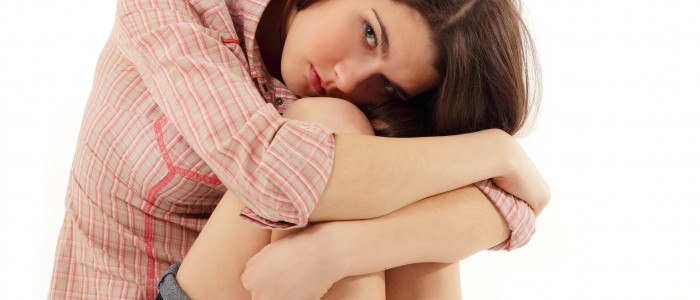What is Premenstrual Dysphoric Disorder (PMDD)?
What is premenstrual dysphoric disorder (PMDD) and how is it different form PMS? That’s a great question because so many women struggle with PMS or PMDD and yet there are some distinct differences. First of all neither PMS or PMDD are official diagnoses in the DSM-IV. PMDD is a depressive disorder not otherwise specified. The criteria are as follows:
“In most menstrual cycles during the past year, symptoms (e.g., markedly depressed mood, marked anxiety, marked affective lability, decreased interest in activities) regularly occurred during the last week of the luteal phase (and remitted within a few days of the onset of menses). These symptoms must be severe enough to markedly interfere with work, school, or unusual activities and be entirely absent for at least 1 week post menses” (American Psychiatric Association [DSM-IV-TR], 2000).
Symptoms for both premenstrual syndrome and PMDD begin about 7 to 10 days before the onset of a woman’s period and continue through the first few days. PMS and PMDD can both cause physical symptoms such as bloating, breast tenderness, fatigue and food cravings. Where they differs is that for those with PMDD they can also suffer from emotional and behavior symptoms such as anxiety, extreme mood swings, irritability and easily angered as well as a sense of sadness.
While there are some arguments about whether it should be included as a depressive disorder – many feminists have argued it would just further the stereotype that women are “crazy” during that time of the month, PMDD is a real problem for many women. It is estimated that between 2% and 10% of women suffer from PMDD, so learning as much about it and finding ways to alleviate the symptoms is a good thing regardless of stereotype.
What causes PMDD is not know, but for those with PMS or PMDD there is often underlying depression or anxiety that may be triggered by the hormonal changes during the menstrual cycle.
The good news is that both PMS and PMDD are treatable. Treatments include:
Birth Control Pills – Women can alter their cycle by having a shorter pill free interval or forgoing that time altogether, essentially skipping their periods. Symptoms my still be present, but this may reduce them.
Antidepressants – SSRIs like Prozac and Zoloft may help to reduce the emotional symptoms associated with PMDD.
Lifestyle Changes – Getting regular exercise can be crucial to reducing the symptoms of PMDD. Other changes to lifestyle include cutting back on caffeine, quitting smoking and avoiding alcohol. Getting regular sleep has also been found to be beneficial. Yoga, relaxations, meditation and mindfulness have all been found to be helpful in alleviating some of the symptoms of PMDD.


Comments are closed.